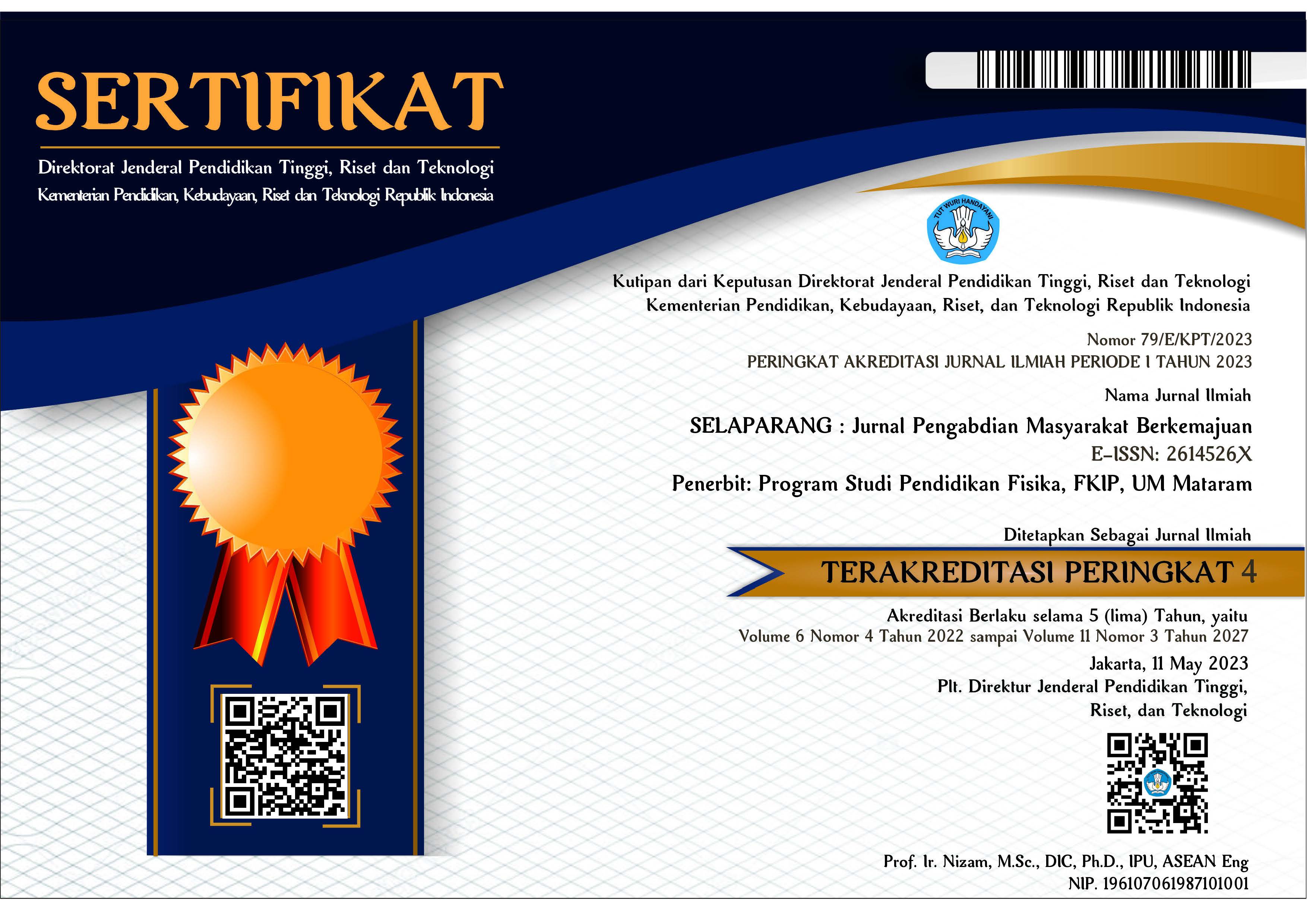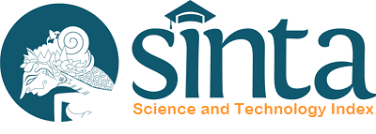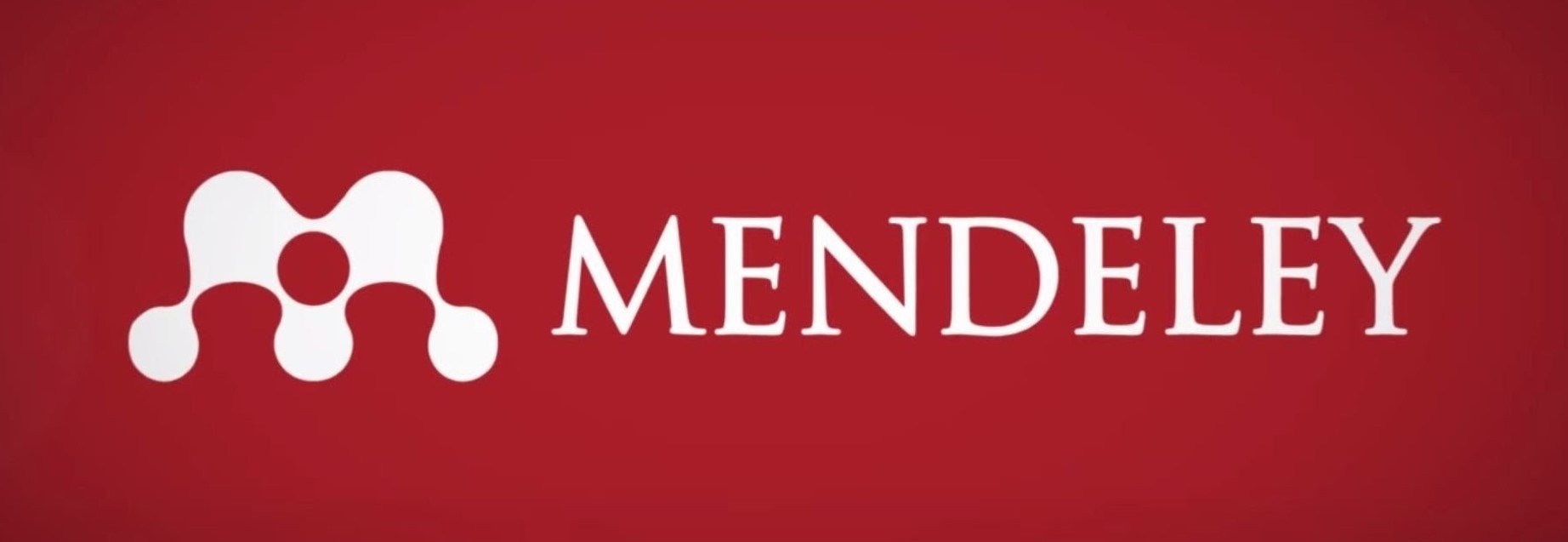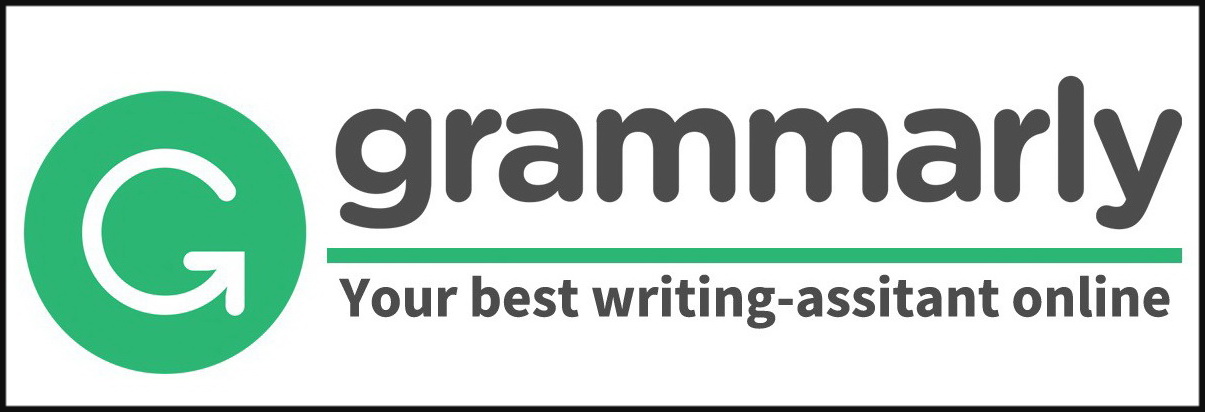Pelatihan pengajuan Hak Kekayaan Intelektual (HaKI) bagi dosen, mahasiswa dan calon guru
Abstract
Abstrak
Tujuan kegiatan pengabdian kepada masyarakat untuk meningkatkan pengetahuan mengenai HKI dan dokumen serta prosedur pengajuan HKI bagi Dosen, Mahasiswa dan Calon Guru. Pengabdian ini dilaksanakan dalam bentuk pelatihan dan demonstrasi pegajuan HKI yang bermitra dengan Universitas Oesman Sapta Oedang Pontianak Kalimantan Barat dan dilaksanakan ditempat tersebut. Untuk pengumpulan data, teknik dan instrumen yang dipilih berupa teknik kuisioner dengan instrumen kuisioner yang disebar melalui google form sebagai alatnya dan dokumen-dokumen untuk mengetahui peningkatan pengetahuan peserta sebelum dan setelah mengikuti pelatihan. Peserta dari pelatihan ini merupakan 17 Dosen dan 34 Mahasiswa dari Univesitas Oesman Sapta Oedang yang tersebar dari 5 program studi yang berbeda serta calon guru dari Universitas Tanjungpura dengan rincian kegiatan sebagai berikut. Demikian diperoleh hasil pelatihan yaitu meningkat sebesar 83.40% pada kategori tahu sampai sangat tahu tentang pemahaman peserta mengenai urgensi memiliki HKI pada produk atau ide kreatif dan invatif, jenis-jenis HKI, dokumen yang diperlukan saat pengajuan, prosedur pengajuan. Selain itu untuk pemahaman diperolah 54% pada kategori sangat tahu tentang pemahaman dan kebermanfaatan 63% diperoleh pada kebermanfaatan.
Kata kunci: hak kekayaan intelektual; dosen, mahasiswa; calon guru profesional
Abstract
The purpose of community service activities is to increase knowledge about IPR and documents and procedures for submitting IPR for Lecturers, Students and Prospective Teachers. This service is carried out in the form of training and demonstration of IPR submission in partnership with Oesman Sapta Oedang University, Pontianak, West Kalimantan and carried out at the location. For data collection, the techniques and instruments chosen are questionnaire techniques with questionnaire instruments distributed via Google Form as the tool and documents to determine the increase in participants' knowledge before and after participating in the training. Participants in this training were 17 Lecturers and 34 Students from Oesman Sapta Oedang University spread across 5 different study programs and prospective teachers from Tanjungpura University with the following details of the activities. Thus, the results of the training were obtained, namely an increase of 83.40% in the category of knowing to very knowing about participants' understanding of the urgency of having IPR on creative and innovative products or ideas, types of IPR, documents required when submitting, and submission procedures. In addition, for understanding, 54% were obtained in the category of very knowledgeable about understanding and 63% were obtained in the category of usefulness.
Keywords: intellectual property rights; lecturers; students; prospective professional teachers
Keywords
Full Text:
PDFReferences
Bibi, T., & Hafeez, A. (2018). Exploration of Plagiarism Practices in Open and Distance Learning ( ODL ). Pakistan Journal Od Distance & Online Learning, 4(1), 49–62.
Duff, J. M. (2005). Perception of Intellectual Property Rights in Engineering and Technology Education. ASEE Gulf-Southwest Annual Conference Texas A&M University-Corpus Christi.
Fishman, T. (2014). The Fundamental Values of AAcademic Integrity. Clemson University.
Hurduzeu, G., Lupu, R., & Lupu, I. (2022). THE NEXUS BETWEEN RESEARCH AND DEVELOPMENT , PROTECTION OF INTELLECTUAL PROPERTY RIGHTS AND FINANCIAL DEVELOPMENT. A EUROPEAN PERSPECTIVE. The Economics of Science: Adding Value to Extracting Value from Research, 24(16), 970–989. https://doi.org/10.24818/EA/2022/S16/970
Indonesia, R. Undang-Undang Repbulik Indonesia No 14. , (2005).
Kasus, S., & Uin, P. (2019). Menghargai hak atas kemampuan intelektual (HAKI) dan meminimalisir plagiat (Studi Kasus Perpustakaan UIN Mataram). Al-Maktabah, 18, 1–13.
Kusmulyono, M. S. (2022). Peningkatan Kualitas Pengetahuan Hak Kekayaan Intelektual bagi Pengajar Universitas Prasetiya Mulya Pendahuluan. Amalee Indonesian Journal of Community Research and Engagement, 3(1), 157–166.
MadhuBalaKaushik, Rajharia, P., Vyas, V., & Soni, M. S. (2023). Navigating Intellectual Property Rights : Fostering Innovation , Access , and Education in the Indian Context. ICONNECT - Web of Conferences, 07004.
Marcuzzo, G., Cavalheiro, M. B., & Mariano, S. (2020). A patent-based model of entrepreneurship education in Brazil. Emerald Publishing, 62(7), 947–963. https://doi.org/10.1108/ET-07-2019-0164
Mattar, M. Y. (2022). Combating Academic Corruption and Enhancing Academic Integrity through International Accreditation Standards : The Model of Qatar University. Journal of Academic Ethics, 119–146. https://doi.org/10.1007/s10805-021-09392-7
Pujiono, Rohmawati Kusumaningtias, Rediyanto Putra, Nur Quratun Aini Binti Haron, Amrizah Kamaluddin, Hazlina Hasan, Shukriah Sa’ad, N. H. (2024). Are Intellectual Assets Management Important for University Performance Achievement ?? Journal of Higher Education Theory and Practice, 24(3), 11–23.
Repanovici, A., Koukourakis, M., Barsan, I. M., & Savescu, D. (2023). Integrating Industrial Property Education into the Curricula of Technical Studies : Some Examples. Knjiznica; Ljubljana, 67(3/4), 155–173. https://doi.org/https://doi.org/10.55741/knj.67.3-4.7 Abstract
Șercan, E., & Voicu, B. (2022). Patterns of Academic Integrity Defi nitions among BA Romanian Students ’. The Impact of Rising Enrolments. Expert Projects Publishing House, 78, 87–106.
Sudjana. (2018). IMPLIKASI DOKTRIN “ FAIR USE ” TERHADAP PENGEMBANGAN ILMU PENGETAHUAN 1 OLEH DOSEN ATAU PENELITI DALAM Sudjana. Veritas et Justitia, 4(2), 493–514. https://doi.org/10.25123/vej.2993
Tinggi, P. Keputusan Mentri Pendidikan, kebudayaan, Riset dan Teknologi tentang IKU PT. , (2014).
Wahyudi. (2020). KINERJA DOSEN : KONTRIBUSINYA TERHADAP AKREDITASI. Scientific Journal of Reflection, 3(4), 401–410. https://doi.org/10.5281/zenodo.4427642
DOI: https://doi.org/10.31764/jpmb.v9i2.29596
Refbacks
- There are currently no refbacks.

This work is licensed under a Creative Commons Attribution-ShareAlike 4.0 International License.
______________________________________________________
Jurnal Selaparang
p-ISSN 2614-5251 || e-ISSN 2614-526X
EDITORIAL OFFICE:



















